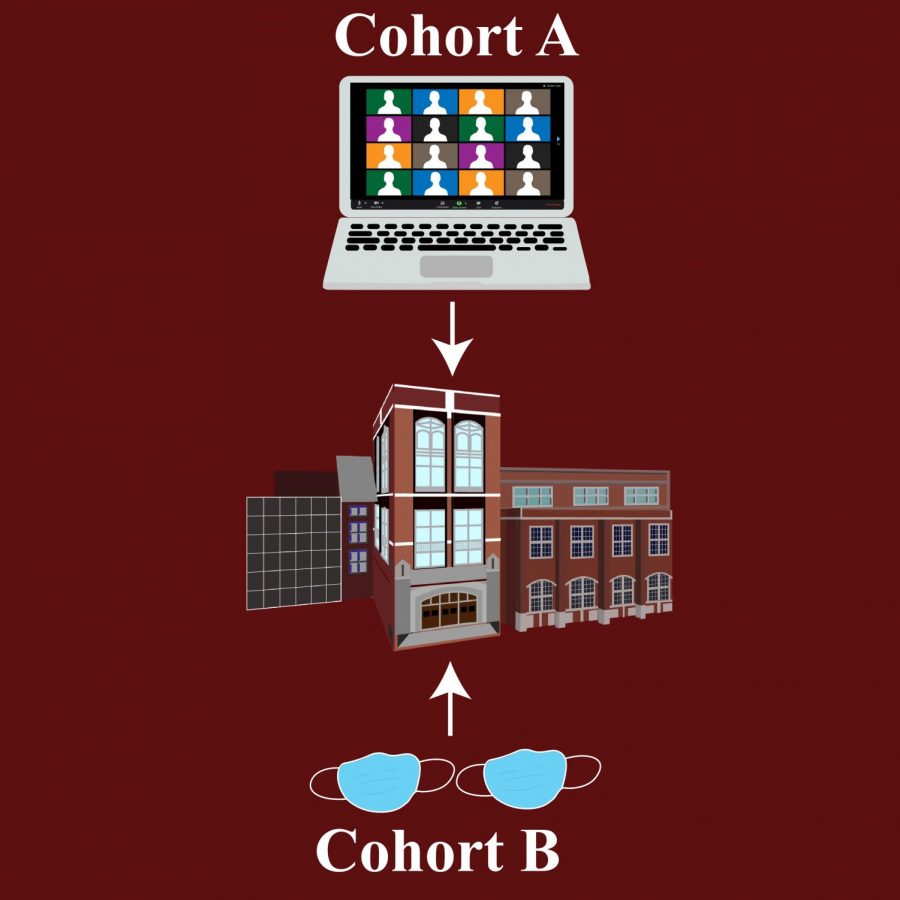The Case for Cross-Cohort Streaming
October 13, 2020
While cross-cohort streaming can prove effective in some cases, mandating its implementation will cause more harm than good.
This article features the thoughts, opinions, and reflections of two SHS students: Michael Waxman ’21, SHS Student Body President, and Simran Ruta ’21, SHS Student Body Vice President.While neither are Maroon staff members, both participate in cross-cohort streaming as a part of their senior A.T. U.S. Government and Economics class.
As students—one hybrid and one virtual— in one of two classes in the school that have implemented cross-cohort streaming, we have a unique perspective on the experience. As long as cross-cohort streaming is used to push curriculum forward and replaces asynchronous work proportionally, we believe it has the potential to improve the learning experiences of both hybrid and virtual students.
As a member of the hybrid community, I, Michael, believe cross-cohort streaming can become a valuable asset for learning this year. I have had the opportunity to participate in cross cohort-streaming on both ends—Zooming in and attending in-person—and experienced both positively. I feel that the success of cross-cohort streaming has a lot to do with the teacher. When Zooming in, my teacher made a point to make me, and the rest of Cohort B, feel included in the discussion. He constantly called on the virtual students and made sure that we were engaged. By using cross-cohort streaming, we were able to extend class discussions and ask more questions. With this added class time, there is less of a sense of rush in terms of the curriculum being covered, and thus more time for in-depth learning. As long as cross-cohort streaming replaces the proportional amount of asynchronous work, I think it is the superior learning tool. My best learning occurs when I have the opportunity to engage in class discussions, which is a key component of cross-cohort streaming. As much as I think cross-cohort streaming has potential, it must be used correctly to be effective. The teacher must use the tool to advance curriculum—not repeat the same material—and must regard the in-person students in the same manner as those online. If these criteria can be met, I believe more teachers should use cross-cohort streaming going forward.
As an all virtual student, I, Simran, initially thought that cross-cohort streaming was going to be a negative experience. On days where my cohort goes into school, I have to be on the computer from 8-3, most of the time zooming into classes alone. Sometimes teachers will put me on the smartboard, which is not ideal and isolates me further. These seven hours on Zoom are matched with several more hours of asynchronous work. However, I have found attending morning classes through Zooms with the presence of other members of the opposite cohort to be quite pleasant. Although I still do not feel completely connected to the class, the other students Zooming in alongside me can relate and therefore it feels a lot more comfortable. However, this is also dependent on the teacher. My experience with cross-cohort streaming has been positive as a result of the teacher’s efforts to engage with the online students and his commitment to assigning less asynchronous work. If Scarsdale were to adopt a cross-cohort streaming policy, it would be necessary to have stricter guidelines on the amount of asynchronous work (which is really just code for more homework) teachers can assign.
2020 is going to be a year of trial and error. There is no adequate replacement to a fully in-person Scarsdale High School education, but, with open minds, we can create an experience that comes close. Cross-cohort streaming is an effective tool that, when used correctly, can enhance the learning of all students and create a more connected and engaging learning environment.

